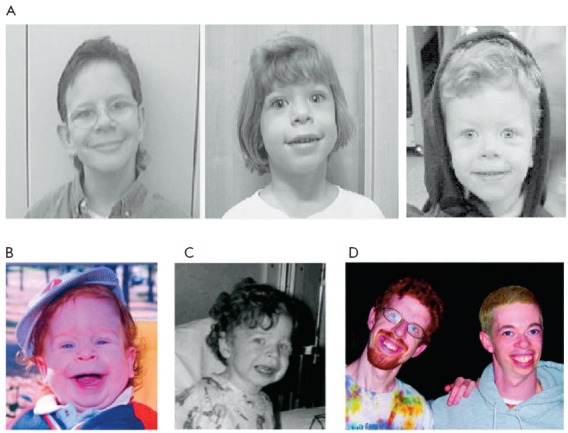|
ABHD11
Abhydrolase domain-containing protein 11 also known as Williams-Beuren syndrome chromosomal region 21 protein (WBSCR21) is an enzyme that in humans is encoded by the ''ABHD11'' gene. This gene encodes a protein containing an alpha/beta hydrolase fold domain. This gene is deleted in Williams syndrome, a multisystem developmental disorder caused by the deletion of contiguous genes at 7q11.23. Alternatively spliced Alternative splicing, alternative RNA splicing, or differential splicing, is an alternative RNA splicing, splicing process during gene expression that allows a single gene to produce different splice variants. For example, some exons of a gene ma ... transcript variants have been described, but their biological validity has not been determined. References External links * Further reading * * * * * EC 3.1 {{gene-7-stub ... [...More Info...] [...Related Items...] OR: [Wikipedia] [Google] [Baidu] |
Alpha/beta Hydrolase Fold
The alpha/beta hydrolase superfamily is a superfamily of hydrolytic enzymes of widely differing phylogenetic origin and catalytic function that share a common fold. The core of each enzyme is an alpha/beta-sheet (rather than a barrel), containing 8 beta strands connected by 6 alpha helices. The enzymes are believed to have diverged from a common ancestor, retaining little obvious sequence similarity, but preserving the arrangement of the catalytic residues. All have a catalytic triad, the elements of which are borne on loops, which are the best-conserved structural features of the fold. The alpha/beta hydrolase fold includes proteases, lipases, peroxidases, esterases, epoxide hydrolases and dehalogenases. Database The ESTHER database provides a large collection of information about this superfamily of proteins. Subfamilies * 3-oxoadipate enol-lactonase Human proteins containing this domain ABHD10; ABHD11; ABHD12; ABHD12B; ABHD13; ABHD2; ABHD3; ABHD4; A ... [...More Info...] [...Related Items...] OR: [Wikipedia] [Google] [Baidu] |
Enzyme
An enzyme () is a protein that acts as a biological catalyst by accelerating chemical reactions. The molecules upon which enzymes may act are called substrate (chemistry), substrates, and the enzyme converts the substrates into different molecules known as product (chemistry), products. Almost all metabolism, metabolic processes in the cell (biology), cell need enzyme catalysis in order to occur at rates fast enough to sustain life. Metabolic pathways depend upon enzymes to catalyze individual steps. The study of enzymes is called ''enzymology'' and the field of pseudoenzyme, pseudoenzyme analysis recognizes that during evolution, some enzymes have lost the ability to carry out biological catalysis, which is often reflected in their amino acid sequences and unusual 'pseudocatalytic' properties. Enzymes are known to catalyze more than 5,000 biochemical reaction types. Other biocatalysts include Ribozyme, catalytic RNA molecules, also called ribozymes. They are sometimes descr ... [...More Info...] [...Related Items...] OR: [Wikipedia] [Google] [Baidu] |
Gene
In biology, the word gene has two meanings. The Mendelian gene is a basic unit of heredity. The molecular gene is a sequence of nucleotides in DNA that is transcribed to produce a functional RNA. There are two types of molecular genes: protein-coding genes and non-coding genes. During gene expression (the synthesis of Gene product, RNA or protein from a gene), DNA is first transcription (biology), copied into RNA. RNA can be non-coding RNA, directly functional or be the intermediate protein biosynthesis, template for the synthesis of a protein. The transmission of genes to an organism's offspring, is the basis of the inheritance of phenotypic traits from one generation to the next. These genes make up different DNA sequences, together called a genotype, that is specific to every given individual, within the gene pool of the population (biology), population of a given species. The genotype, along with environmental and developmental factors, ultimately determines the phenotype ... [...More Info...] [...Related Items...] OR: [Wikipedia] [Google] [Baidu] |
Williams Syndrome
Williams syndrome (WS), also Williams–Beuren syndrome (WBS), is a genetic disorder that affects many parts of the body. Facial features frequently include a broad forehead, underdeveloped chin, short nose, and full cheeks. Mild to moderate intellectual disability is observed, particularly challenges with visual spatial tasks such as drawing. Verbal skills are relatively unaffected. Many people have an outgoing personality, a happy disposition, an openness to engaging with other people, increased empathy and decreased aggression. Medical issues with teeth, heart problems (especially supravalvular aortic stenosis), and periods of hypercalcemia, high blood calcium are common. Williams syndrome is caused by a genetic abnormality, specifically a Deletion (genetics), deletion of about 27 genes from the long arm of one of the two chromosome 7s. Typically, this occurs as a random event during the formation of the egg or sperm from which a person develops. In a small number of cases, i ... [...More Info...] [...Related Items...] OR: [Wikipedia] [Google] [Baidu] |
Alternative Splicing
Alternative splicing, alternative RNA splicing, or differential splicing, is an alternative RNA splicing, splicing process during gene expression that allows a single gene to produce different splice variants. For example, some exons of a gene may be included within or excluded from the final RNA product of the gene. This means the exons are joined in different combinations, leading to different splice variants. In the case of protein-coding genes, the proteins translated from these splice variants may contain differences in their amino acid sequence and in their biological functions (see Figure). Biologically relevant alternative splicing occurs as a normal phenomenon in eukaryotes, where it increases the number of proteins that can be encoded by the genome. In humans, it is widely believed that ~95% of multi-exonic genes are alternatively spliced to produce functional alternative products from the same gene but many scientists believe that most of the observed splice variants ar ... [...More Info...] [...Related Items...] OR: [Wikipedia] [Google] [Baidu] |


